Food delivery apps have become extremely popular today as they allow users to quickly and conveniently order ready-made meals from restaurants directly to the office or home. While pizza delivery is a relatively new business model, on-demand pizza delivery apps are rapidly gaining popularity among users around the world. With such an application, customers can receive their pizza within 20-30 minutes of placing an order. Thus, it becomes clear that high-quality mobile delivery is vital for pizzeria owners to attract more customers.
Based on our experience in developing projects for similar solutions, we have decided to explain in detail how to create a performant pizza delivery app. Check our fullest guide below.
Market Potential & Reasons to Invest in a Pizza Delivery App
The global food home-delivery market is expanding and becoming even more powerful. The COVID-19 pandemic has restricted people’s movements and, therefore, food delivery over the internet has become a viable solution. Thus, according to Statista’s Online Food Delivery Survey the online food delivery market is showing annual revenue growth of +27.9% and will only increase due to the situation with the coronavirus spread. What’s more, the State of What Feeds Us Study reveals that 64% of users have at least one application for ordering food, groceries, etc. on their phone.
What’s in the pizza delivery market?
The pizza-making industry occupies an important niche in the global food market and is quite competitive. For example, Domino’s Pizza announced last year it would exit some Nordic countries because they could not withstand the competition, high labor costs, and weakening economic conditions. With dozens of examples of successful pizza brands, the market might seem a bit overloaded. However, there is plenty of room for innovative and promising names.
In general terms, the pizza industry can be divided into three areas — full service, express service, and delivery — with different rules for each segment. Delivery services and fast-food restaurants have made the most profit in the tough economic environment of the past few years, and they are also the ones announcing the most ambitious expansion plans.
To show the main trends in the on-demand pizza delivery market and determine the functions that make up mobile applications, below we have listed some major players in the chain pizza restaurant segment:
- Pizza Hut, with 18,000 restaurants in over 100 countries:
The Pizza Hut mobile application provides convenient and quick orders. It offers a large selection of pizzas, the possibility to create a pizza according to your own recipe, convenient payment in several ways (cash, card, online payment), easy re-ordering, tracking order status, a bonus program, as well as the ability to place an order to be delivered at a specific time and day.
- Domino’s Pizza, with more than 17,000 stores in 90 countries:
The app built for this world-famous pizza chain is a great example of how to properly design a branded pizza application. Some of its most notable features are ordering in a few clicks, a large selection of dish sizes and additional ingredients, a unified order database, and re-ordering features. The app is available to mobile users in countries around the world where Domino’s Pizza restaurants are located.
- Papa John’s, with more than 5,000 restaurants in 45 countries around the world:
This is another great example of a well-designed pizza delivery app. The application has many features offering a convenient choice of dishes, editing ingredients, various types of payments, tracking order status, setting up one-click re-ordering, promotions, etc.
While some big chains in the market have their brand-specific pizza delivery applications, there are also aggregators built on the traditional model of food delivery — for example, Uber Eats, Foodora, Wolt, Just Eat, etc. In this business model, restaurants and aggregation platforms are in direct cooperation with each other. With the help of such food delivery aggregators, users can access several restaurants through a single online portal and compare their menus, prices, and reviews.
What are the reasons to invest in a pizza delivery app?
If you decide to invest in building a pizza delivery app, it can bring a lot of benefits to your business — primarily profit and satisfied customers. Such a mobile application will also help your customers to save a lot of time choosing the desired dishes and placing an order in a convenient way. This, in turn, will increase customer loyalty to your brand. It is not uncommon for restaurants to prepare good pizza but lose a significant amount of money due to poor quality applications:
Why Restaurants Should Invest in Delivery Apps
Customer loyalty
Customer trust is a long and difficult process. In most cases, modern buyers have a wide variety of similar products or alternative service providers to choose from. A high-quality mobile app can be the backbone of your business, providing excellent customer service and offering great loyalty programs for your customers.
Location-based marketing
Location-based marketing is an emerging trend nowadays. With the help of a mobile delivery app, you can send push notifications and text messages about upcoming promotions depending on the location of a customer. In other words, a customer will get your offer of the moment which they can take advantage of in the easiest way possible.
Better customer data
Who are your regular customers? What do they like to order from your restaurant? What pizza types are popular? Do they know about promotions and offers on the site? Do they prefer to place orders through the website or app? These and many other related questions can be answered using analytics and information provided by a trusted mobile ordering system for restaurants. You can use this data to target promotions and encourage your customers to keep coming back.
Delivery
Thanks to mobile app development, it is possible to significantly improve your delivery service. Traditionally, people had to call to place orders, or drive to restaurants to buy take-out food, and then wait for the food to be prepared and delivered. Restaurant owners can instead create an app that not only simplifies the ordering and delivery process for customers but also simplifies the restaurant’s operations.
Must-Have Pizza Delivery App Features
It is not enough to develop a mobile application — it must fit into the ecosystem of the enterprise and correspond to its business processes. When making a pizza delivery app, its must-have features can include scheduling, order placement, real-time delivery tracking, push notifications, in-app payments, order history, instant chat for communication with customers and drivers.
Pizza delivery app functionality can be divided into three panels — for customers, for couriers, and for pizzerias.
Pizza Delivery App Features for Customers
During the development process, it is necessary to determine the main functions that need to be created for customers. Here is the basic client-related functionality:
Menu screens — to access the menu with clear descriptions of dishes and high quality photos
Ingredient adjustment — to add or remove ingredients
Online payment — to pay for food and delivery online
Order tracking — to track orders and movement of couriers in real-time
Locating restaurants nearby — to access a map of restaurants in the customer city
Loyalty programs — for example, discounts, bonuses, promo codes
Order history — to see the history of orders with the possibility to repeat orders in a few clicks
Help and customer support — for example, live chat and call option
Social media ordering — to provide social media-enabled ordering
Pizza Delivery App Features for Couriers
Here is the main functionality for the courier panel:
Sign up page — to register a courier account through different authentication forms (for example, phone number or email)
Communication channels between couriers and clients — the ability to contact clients, without the need to reveal customer data and vice versa for security reasons
Order details — to access details like expected delivery time, size, pick-up location
Status update — to manage order statuses (e.g. accepted, canceled, delivered, etc.)
Navigation — access the built-in map so that couriers can easily find the route
Account history — to check how many orders are delivered, hours worked, etc.
Pizza Delivery App Features for Restaurants
The panel for restaurants should have the following functionality:
Integrated content management system — to add new dishes, their descriptions, and photos
Order management page — to manage orders, create orders inside the application (e.g. if the user called the phone), see the order status, etc.
Payments — to accept payments, track earnings, etc.
Marketing tool — to launch promotions and offer promo codes
Cross-interface communication channels — to interact both with the courier and the client inside the application
Estimation of delivery time — to calculate the time for transportation, taking into account the load of the kitchen/situation on the road, etc.
Feedback management — to collect reviews about the order or courier, store and process them
Reports & analytics — to see the statistics of orders in general and information about couriers, display information in the form of dashboards, transfer information to internal CRM, accounting systems, etc.
Important Factors for Great UX of Pizza Delivery App
There are many factors that contribute to a great UI/UX of pizza delivery apps. Based on our experience with analogous applications, we have compiled a list of the most important software development factors to consider when designing UX:
Convenient registration process
From the moment of installing the app, it is obvious that clients would expect the sign-up and login process to be easy. For example, users can just enter their phone numbers and the SMS verification code comes to it, or they can register through social networks. Also, users should be able to create a profile and add payment information as easily as possible.
Convenient ordering
The key to a successful pizza app is a quick and easy ordering process. Convenient search and find functions allow users to place orders faster. No one likes endless searches. Besides, showing exact delivery times and costs should also be a top priority since, for example, hidden taxes and fees will only make the customer distrust your app.
Main screen with promotions and popular products
For a great pizza delivery app design, we also recommend adding the functionality of promotions, popular products, and news that can be displayed on the home screen. Connecting push notifications and implementing loyalty programs to increase the interest of the target audience using the application also contribute to a great UX.
Location tracking and live support
The next important factors that influence the UX of a pizza delivery app are tracking in real-time and customer support. Real-time tracking is basically where users can track their orders throughout the whole delivery process. Along with this, the application should have a real-time support system to help users if any order-related problems arise.
Tech Components for Pizza Delivery App Development
Application development for pizza delivery is a complex process that consists of different stages. In the table below, we have illustrated the technology stack that can be used when developing such an application:
Budget and Processes to Create a Pizza Delivery App
The cost to develop a pizza delivery app depends on many factors. You can make an application only for Android or iPhone or develop a cross-platform solution for your business. The functionality that you would like to add also affects the price and development time. It is important to understand that there are minimum requirements that must be considered for the service to be popular. You can also implement additional features to differentiate your business from online competitors. However, the cost will rise. Typical development prices range from $10,000 for a medium-sized application.
Once you have identified the list of features to include, you can move on to application development. Here are the main stages of the development process:
Conclusion
Nowadays, restaurants using food delivery services and apps for their businesses are seeing these innovations have a strong impact on their sales. As you can see from the article, the development of a pizza delivery application consists of several stages. First of all, you need to set aside the necessary marketing and development budget, and then develop a comprehensive strategy to enter the market with your product and ensure its popularity.
If you want to build a similar application for your business, our Lanars team will be happy to share their experience in application development.


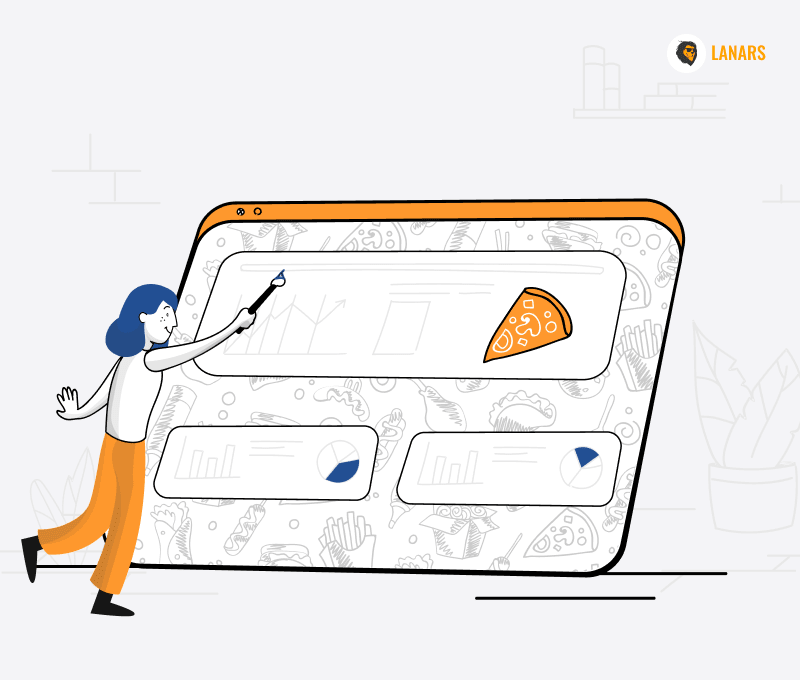
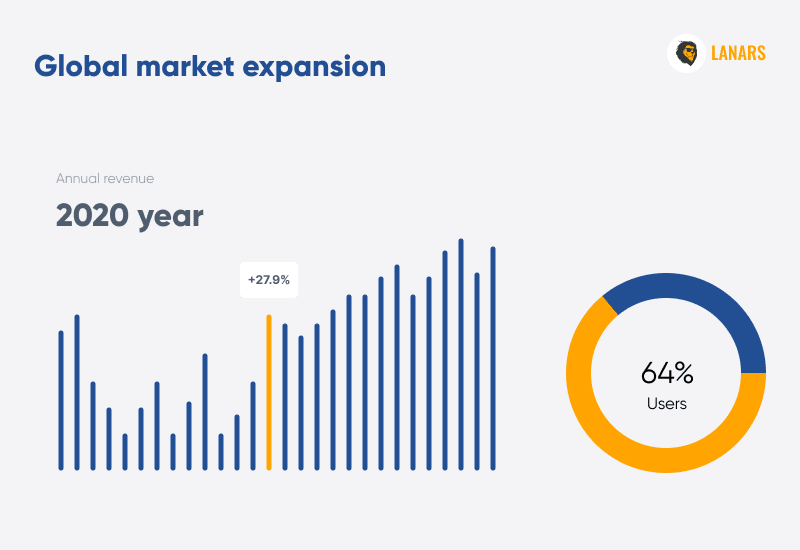
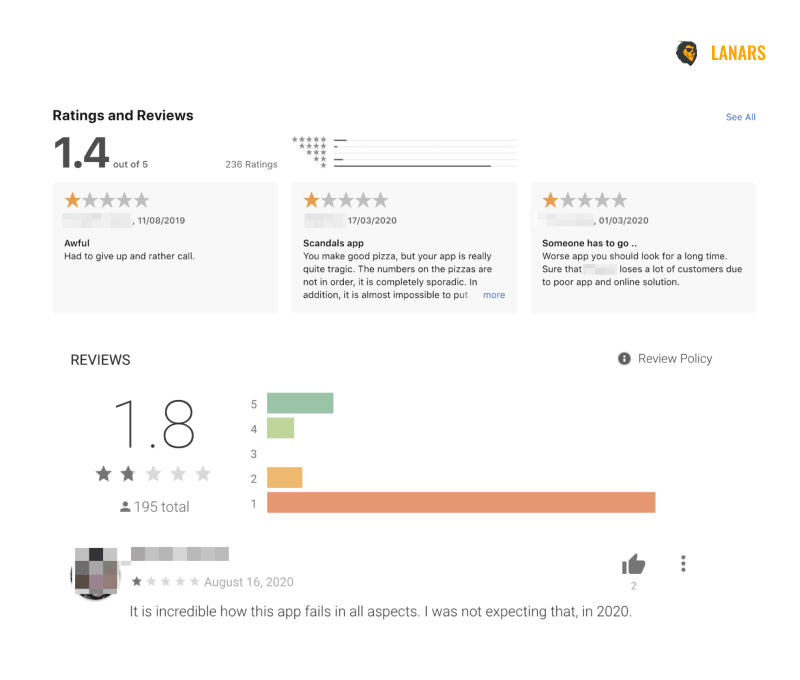
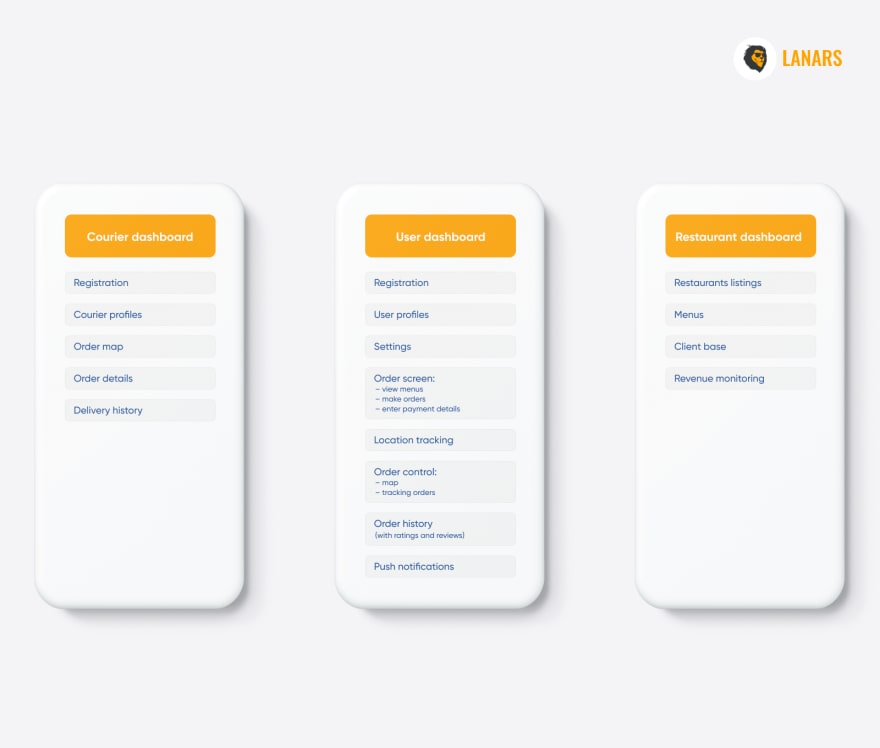

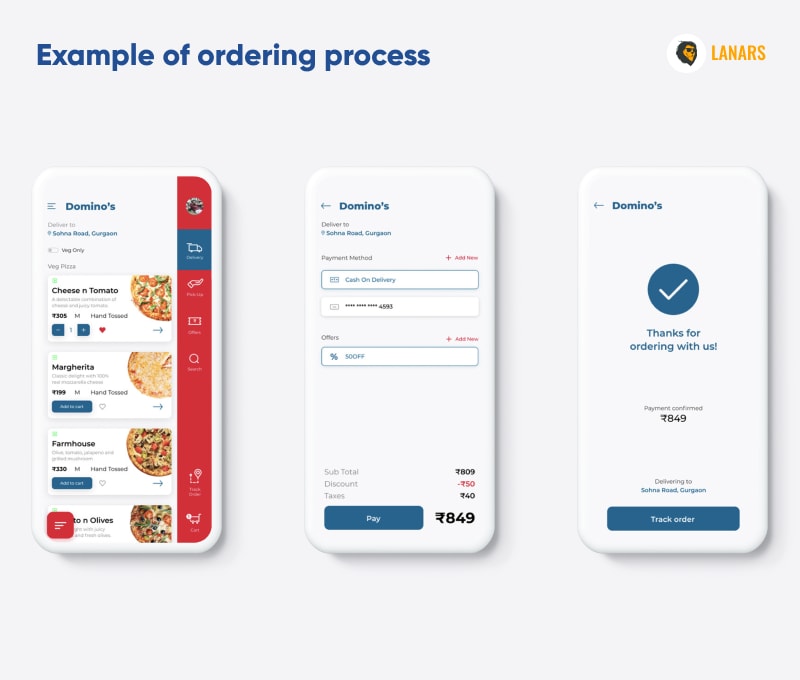
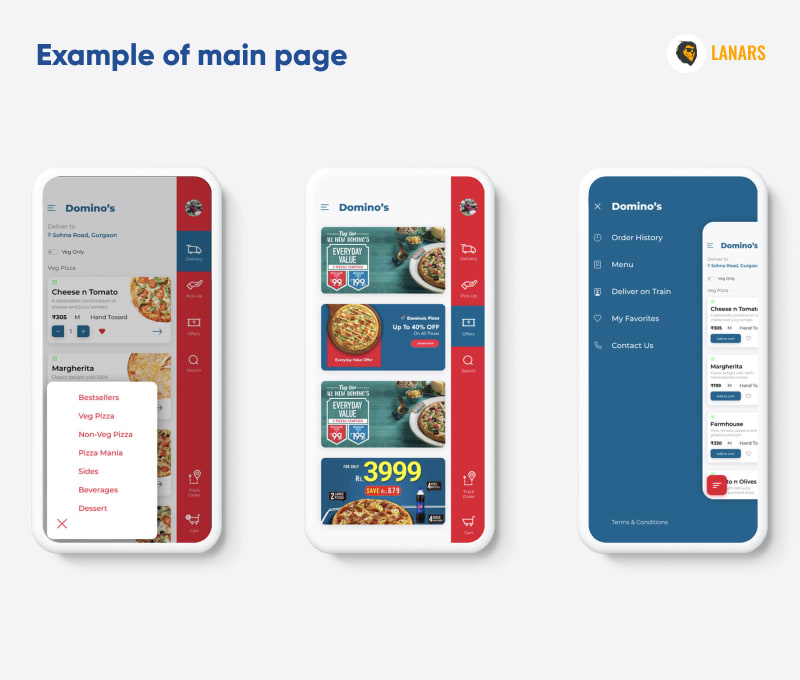
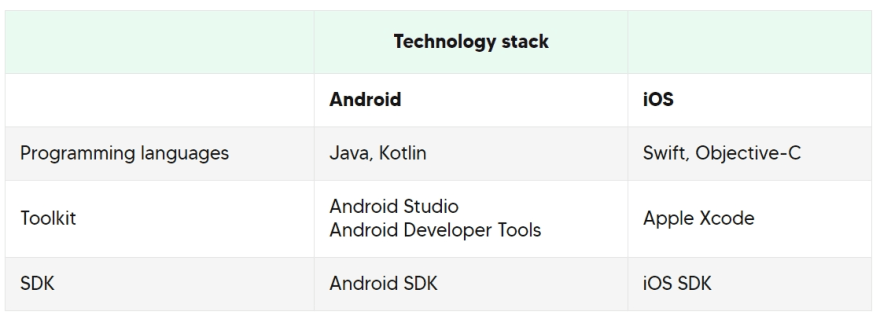


Top comments (0)
Some comments may only be visible to logged-in visitors. Sign in to view all comments.